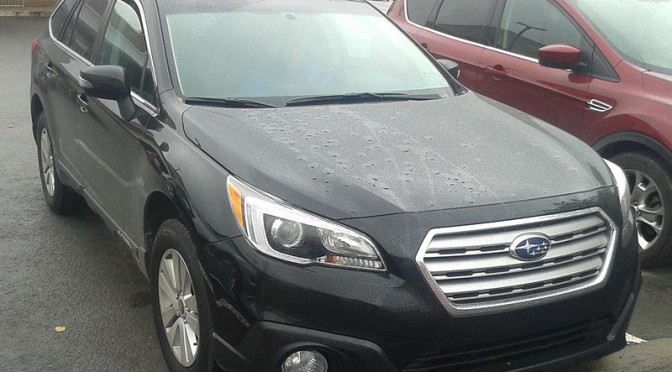As a safety-minded parent and the author of a blog that researches car safety 24/7, whenever I shop for a family vehicle, crashworthiness and crash-prevention is one of my top priorities. I frequently discuss and compare vehicles among a range of metrics, such as which cars, small cars, minivans, and SUVs are most likely to resist a side impact collision, or which minivans are most likely to keep occupants safe during rollovers. Car safety is a big deal to me.
As a result, I often get emails from readers who, as fellow parents, are invested in making the best choices for their families within their budgets. And one of the most frequent questions involves a comparison between Volvo, a brand that has long been associated with safety, and Subaru, a relative up-and-comer that has largely taken the Volvo torch as a company focused on keeping its passengers safe.
To put it simply, readers want to know which of the two brands makes safer, cars, wagons, crossovers, and SUVs. So I got to work to create the most comprehensive answer to this question on the Internet. As always, these are my thoughts, and aren’t gospel from the mountain. That said, I find questions like these fascinating, and pride myself on answering them as thoroughly as possible.
The short answer is that both manufacturers make very safe vehicles. The long answer is a bit more complex, and depends on where you’re looking. This will be part of a series comparing makes and models for safety each year. Here is a previous article comparing the ’15 Odyssey vs the ’15 Sienna.
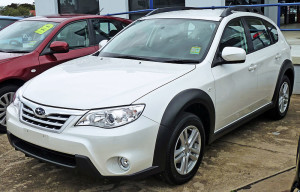 The Small Car and Wagon Market: Subaru!
The Small Car and Wagon Market: Subaru!
When it comes to the small car market, Subaru beats Volvo for safety in the United States, simply because Volvo no longer offers a small car in the US. Subaru, on the other hand, offers the Impreza in both sedan and wagon versions, as well as the XV Crosstrek hatchback. All have good moderate frontal, side, and roof scores, as well as good small overlap scores. The underlying structures of all three vehicles are identical, which means each is about as safe as the other. The ’09-’11 Impreza wagon had a driver death rate of 25 in the most recent IIHS study, which was the best score in its category of small wagons, and the second-best small car score overall. The best went to the ’10-’11 Toyota Prius at 16.
You can see my 3 across car seat guides for the Impreza / Crosstrek here.
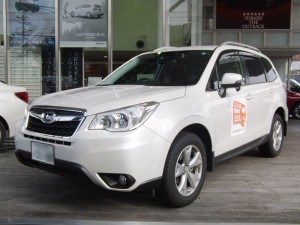 The Small SUV Market: Subaru!
The Small SUV Market: Subaru!
Subaru wins by attrition again in the small SUV market against Volvo, as Volvo does not offer a small SUV or crossover. Subaru, on the other hand, offers the Forester, which, like the Impreza and Crosstrek, features good moderate frontal, side, and roof scores, as well as good small overlap scores. The ’09-’11 Forester had a driver death rate of 20 in the most recent IIHS study, which, while better than the Impreza’s score above, was only in the middle of the pack among small SUVs. The best was the 2WD ’08-’11 Jeep Compass at 7.
You can see my 3 across car seat guides for the Forester here.
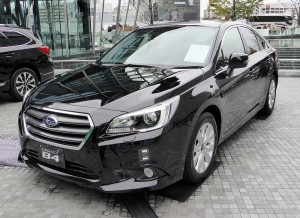 The Mid-sized Car and Wagon Market: Subaru!
The Mid-sized Car and Wagon Market: Subaru!
The mid-sized car and wagon market is where Subaru and Volvo finally go head to head, and although it’s a close competition, Subaru wins again! Let’s look at how:
In the sedan arena, Subaru has the Legacy, while Volvo has the S60. The ’10-’11 Legacy was the first non-luxury car to ever be estimated to have a zero driver death rate by the IIHS, which is as strong a testament to its safety as any vehicle can achieve. The S60 did not sell enough models in the same time period to show up in the DDR study, so I have to give the nod to the Legacy there.
The picture becomes still clearer when looking at crash tests. At first glance, both vehicles look excellent here, with good moderate frontal, side, and roof scores, as well as good small overlap scores. It’s worth noting, however, that the Legacy is also one of the most side-impact resistant cars you can buy in 2015, with 19.5 cm of resistance. The S60, on the other hand, doesn’t make the list.
Here is another difference well worth acknowledging. While both vehicles also have “superior” ratings from the IIHS in front crash prevention, if you look at the details, the Legacy, when equipped with the optional EyeSight package, was capable of avoiding a collision when forced to brake at 25 mph. The S60, on the other hand, with the optional Technology package that included collision warning and full auto brake, was only able to reduce its impact speed by 14 mph. In other words, it hit the test vehicle at 11 mph. Subaru clearly wins here.
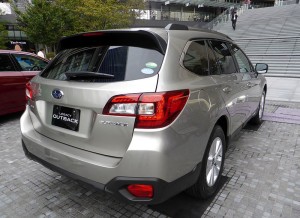 The story is the same when looking at wagons. Subaru offers the Outback, which sells more than every other wagon in the US put together, vs. the V60, the wagon variant of the S60, and the XC70. The XC70 hasn’t been tested by the IIHS, but the Outback and V60 have. The Outback, like the Legacy, features good moderate frontal, side, and roof scores, as well as good small overlap scores and superior front crash prevention scores; the V60 does as well. It’s worth noting, however, that the Outback is also one of the most side-impact resistant cars you can buy in 2015, with 22 cm of resistance. The V60, on the other hand, doesn’t make the list.
The story is the same when looking at wagons. Subaru offers the Outback, which sells more than every other wagon in the US put together, vs. the V60, the wagon variant of the S60, and the XC70. The XC70 hasn’t been tested by the IIHS, but the Outback and V60 have. The Outback, like the Legacy, features good moderate frontal, side, and roof scores, as well as good small overlap scores and superior front crash prevention scores; the V60 does as well. It’s worth noting, however, that the Outback is also one of the most side-impact resistant cars you can buy in 2015, with 22 cm of resistance. The V60, on the other hand, doesn’t make the list.
However, yet again, when you look at the front crash prevention scores, the Outback pulls ahead of the V60. The Outback, when equipped with the optional EyeSight package, was capable of avoiding a collision when forced to brake at 25 mph. The V60, on the other hand, with the optional Technology package that included collision warning and full auto brake, was only able to reduce its impact speed by 16 mph. In other words, it hit the test vehicle at 9 mph. Subaru wins again.
You can see my 3 across car seat guides here for the Legacy, S60, Outback, and V60.
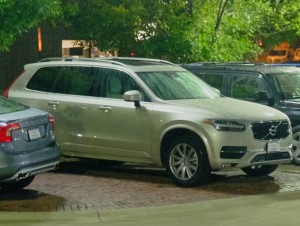 The Mid-sized SUV Market: Volvo!
The Mid-sized SUV Market: Volvo!
The numbers finally change in Volvo’s favor when we arrive at the mid-sized SUV market, although only due to attrition: Subaru no longer offers a mid-sized SUV. As a result, Volvo wins handily with both the 2-row XC60 and the 3-row XC90. Both crossovers feature good moderate frontal, side, and roof scores, as well as good small overlap scores and superior front crash prevention scores. That said, the XC90 definitely stands out above the XC60 in two ways. The first involves side impact collision resistance. While both vehicles are among the best SUVs you can be in if you’re about to be t-boned, the XC90 is the best vehicle currently available in the United States, with an impact-resistance score of 26 cm. The XC60 comes in at 22 cm–still very impressive, but definitely behind the XC90.
The second area where the XC90 proves itself over the XC60 is in the realm of front crash prevention. With the optional Technology package that included collision warning and full auto brake, the XC90 was capable of avoiding a collision from 25 mph. The XC60, however, wasn’t as capable, and only reduced the impact speed by 13 mph, meaning it hit the test vehicle in front of it at 12 mph. Overall, the XC90 is the better SUV between the two.
You can see my 3 across car seat guides here for the XC90 and XC60.
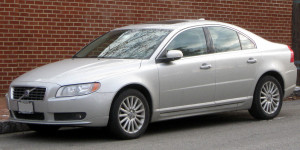 The Large Car Market: Volvo!
The Large Car Market: Volvo!
The large car segment is the last where we can compare Subaru and Volvo, and once again, Volvo wins by attrition, as Subaru doesn’t offer a large car, while the S80 offered by Volvo is a great one. As with every other vehicle on this list, you have access to good moderate frontal, side, and roof scores, as well as good small overlap scores and superior front crash prevention scores.
However, Volvo’s front crash prevention once again doesn’t prove as effective as Subaru’s, as the S80 was only able to reduce the impact speed by 13 mph when traveling at 25 mph, meaning it hit the test vehicle in front of it at 12 mph. It’s better than not slowing down at all, but it’s still a crash.
Do I choose a Subaru or a Volvo to keep my family safe?
This, in the end, is the question you came here to answer. As you can see, the answer depends on where you’re looking. If you want a small car, SUV, or wagon, go with Subaru, as Volvo doesn’t offer any choices and the ones Subaru does are great. If you want a mid-sized SUV or large car, go with Volvo for the same reason–Subaru doesn’t have any available, and the Volvos are great. But if you’re looking for a mid-sized sedan or wagon, I’d go with a Subaru, as the Legacy beats the S60 and the Outback beats the V60. The XC70 is untested, but based on Volvo’s performance with the S80, on which the XC70 is based, I’m pretty sure the Outback would again fare better in the auto brake test and in side intrusion resistance.
In the end, both manufacturers make great vehicles, and safety is just one of many variables to compare between them. But if this is the variable that matters to you, I hope this article has shed more light on what you’ll get out of your next Subaru or Volvo. Stay tuned for more articles comparing the safety of various makes and models.
Please feel free to check out the 3 across car seat guide to see which car seats you’re most likely to be able to fit into your vehicle of choice. I’ll continue adding vehicles every few days until every major car, truck, SUV, or van on the road is there. Finally, do remember to avoid common mistakes parents make with car seats.
—
If you find the information on car safety, recommended car seats, and car seat reviews on this car seat blog helpful, you can shop through this Amazon link for any purchases, car seat-related or not. Canadians can shop through this link for Canadian purchases.

